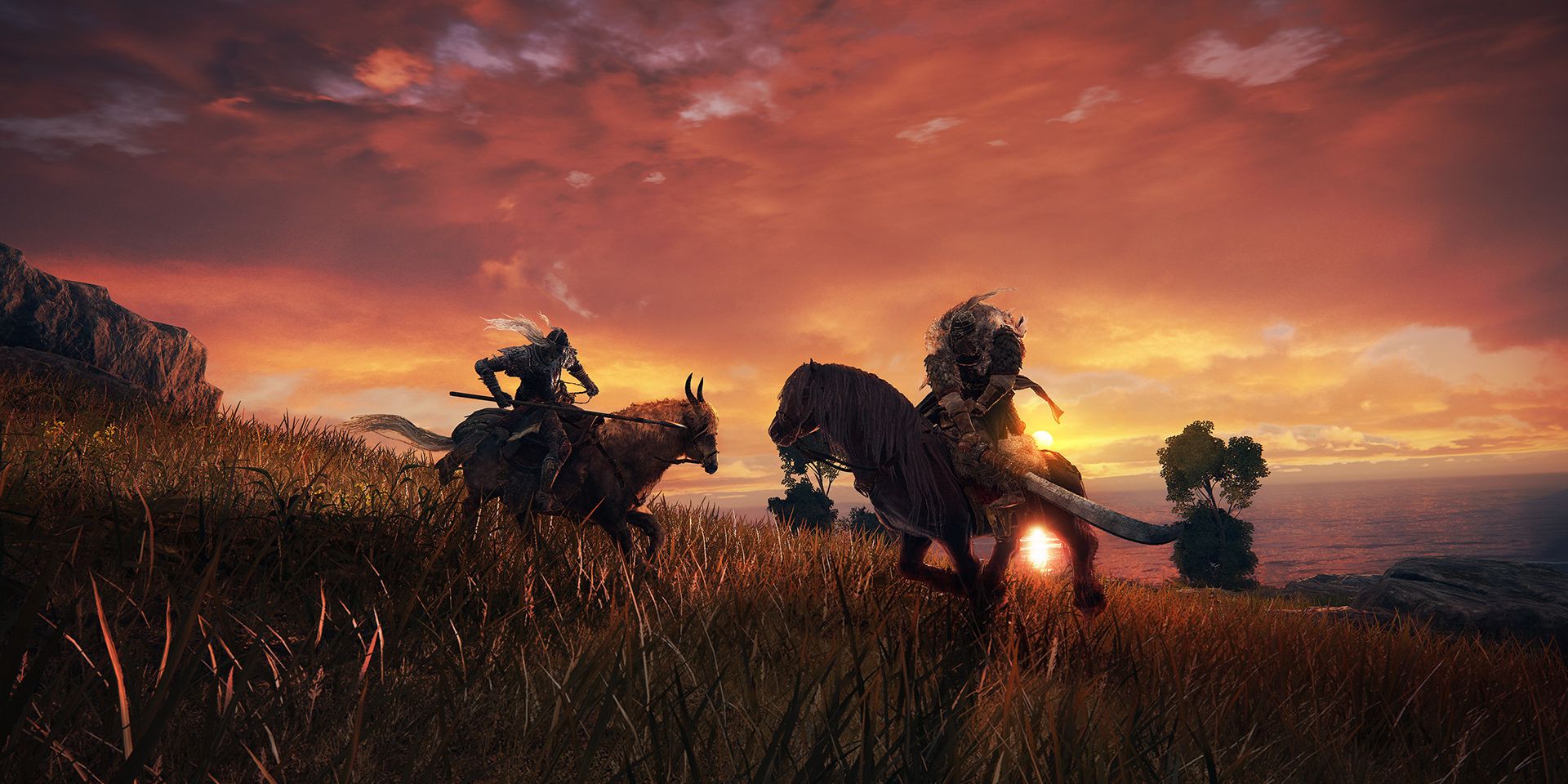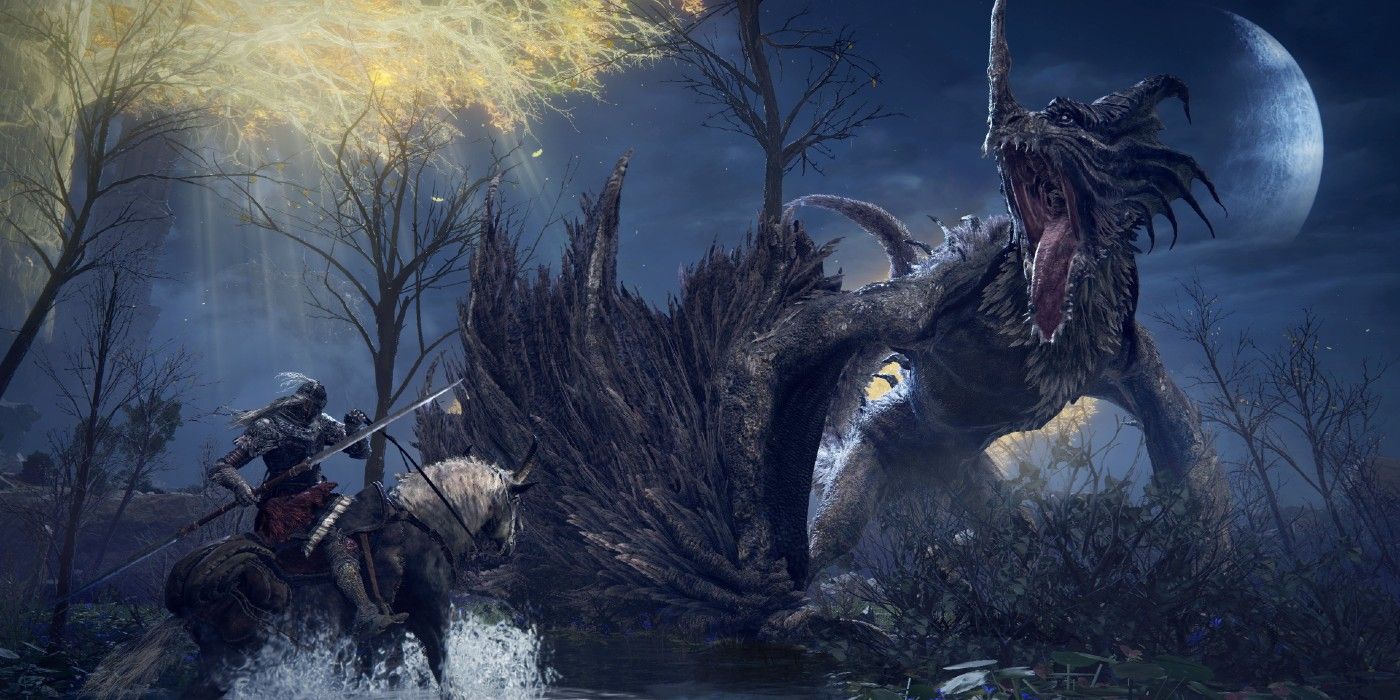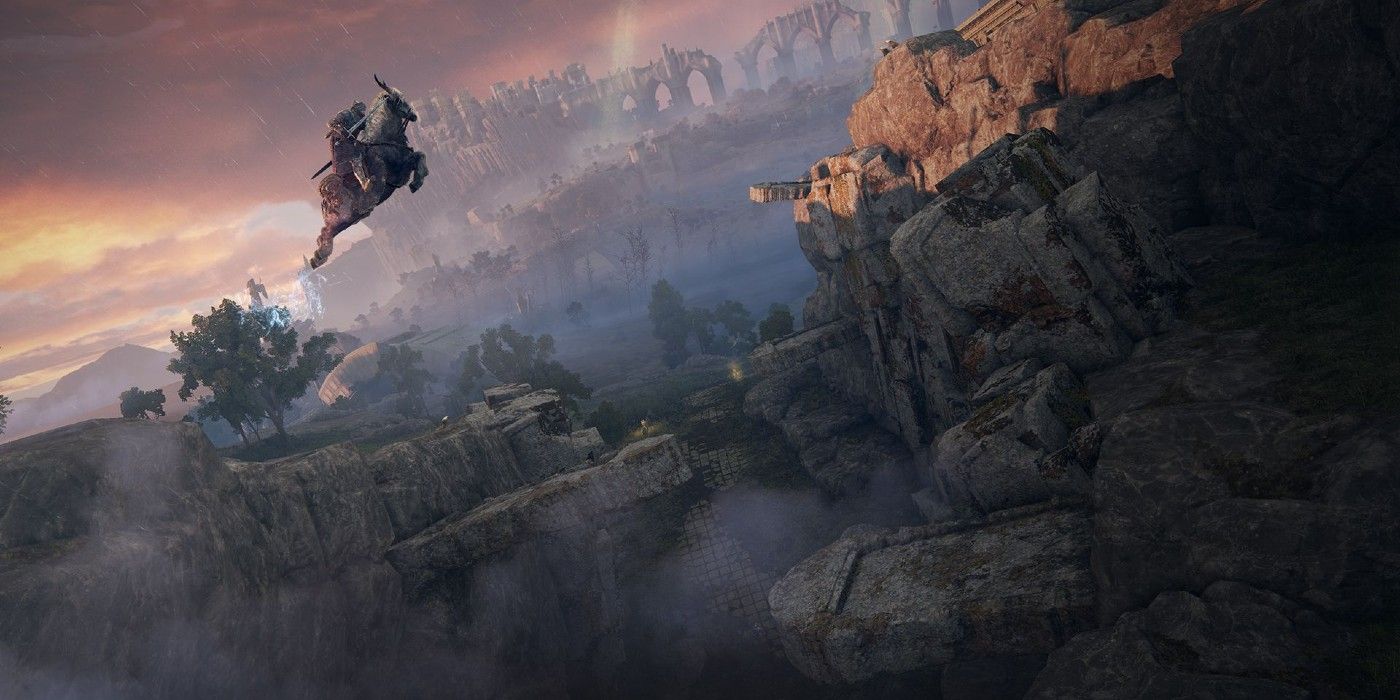In the last Network Test for Elden Ring, FromSoftware's newest dark fantasy RPG, a lucky few players learned how to explore the game's open world on horseback and fight enemies in mounted combat. Demon's Souls, Dark Souls, and other previous FromSoftware "Soulslikes" have always given their players medieval weapons and armor sets closely associated with European Knights, Japanese Samurai, and other equestrian warriors. Elden Ring's new horse-riding mechanics have finally given fans of FromSoftware RPGs the chance to use these weapons and armor sets for their intended purpose and even, potentially, drawn on cavalry tactics from the pre-modern world to improve their playing skills.
The horse-riding gameplay seen in the Elden Ring Network Test is a mix of realistic and unrealistic features, each implemented in order to make roaming and fighting on horseback a fun and balanced experience. To start with, the "Spectral Steed" players can summon (a shaggy horse with horns called Torrent) can be summoned and dismissed using a key item and can double-jump in the air. This lets players explore treacherous environments in the open-world, then "put away" their horse without fear of losing it. On the more realistic side of things, players have to worry about the health of their horse when riding it into battle against infantry or other mounted foes. If their horse "dies," they fall to the ground and become stunned for quite a bit, leaving them vulnerable to a devastating riposte attack at the hands of their foes.
Once players master the principles of horse-riding in Elden Ring, they gain a whole new toolset for dealing with both crowds of enemies and large bosses in the open world. Piercing weapons like Lances become excellent tools for running down stray enemies and knocking other mounted warriors off their steeds, while bows, weapons with long-range Skills, Glintstone Sorceries, and Incantations can be fired while moving around on horseback. Even though Elden Ring's mounted combat mechanics prioritize fun over realism, players of this RPG can still draw heavy inspiration from the techniques and tactics of real historic knights to improve their virtual equestrian skills.
Elden Ring's Horse Combat And Knightly Jousting Traditions
The history of horse-mounted combat is a tumultuous one, with the tactics, equipment, and martial values of militant equestrians changing from era to era. First, there were warriors who yolked their horses to chariots, firing arrows and hurling lances at their enemies while a charioteer steered them around enemy formations; this style of combat seen in Bronze Age-set video games lingers on through national epics such as the Illiad, the Mahabharata, and The Tain, featuring demigod heroes such as Achilles, Cu Chulainn, and Arjuna who fight off entire armies alongside a faithful charioteer, a trusty team of horses, and a chariot stocked full of weapons. After horses were bred with the strength and size to carry humans into battle, chariot-riding heroes gave way to warriors who fought on horseback, using blankets, reins, shaped saddles, and stirrups to keep themselves mounted.
Over the course of these military innovations, a martial tradition of heavy cavalry emerged - armored warriors with armored horses (usually from a noble class) who could break more lightly armored forces with the weight of their charge and run down forces who turned to flee. Aristocratic warrior traditions of mounted combat exist all over the world, but the mounted combat in Elden Ring seems to draw the most inspiration from the "Cataphracts" of certain Mediterranean empires and the plate-armored, lance-wielding knights of Medieval Europe.
Judging by gameplay footage revealed by Bandai Namco, four Elden Ring weapons are particularly useful when fighting on horseback. The "Winged Spear" and "Lance," much like in real-life history, give mounted fighters extra reach and can knock enemies off their feet when used in charging attacks. Long blads such as the "Bastard Sword" and "Ordovis' Greatsword" also give players more reach when attacking enemies up close, making it less likely their characters will miss their attacks when charging at or past a foe.
Most people are familiar with the tropes of a medieval knight charging at their enemy with a lance cradled under their armpit. However, the historical weapons and tactics used by knights and other heavy cavalry in the Middles Ages differ in a few ways from how it's been portrayed in pop culture, particularly games that depict medieval warfare, like Mount & Blade 2. When a charge was sounded, a band of knights would conserve the energy of their steeds by approaching the enemy at a mild trot, eventually accelerating to a canter, then a full-on gallop at the final moment of contact.
After striking a foe with their lancer, the knight would drop their likely-shattered weapon and switch to a sword, axe, or mace for close-quarters combat. Finally, they would withdraw at the sound of the rally trumpet, fall back into formation with their allies, and acquire new lances for their next charge. This model of heavy cavalry combat maps neatly to both the melee-range horse combat in Elden Ring and the best tactics players can use when charging at enemies; close the distance with long-range "Lance" or "Winged Spear," switch to a chopping weapon when hacking a foe up close, then ride out of range before you get overwhelmed and prepare for the next charge.
Elden Ring's Horse Combat And Horse Archery Tactics
Contrary to popular stereotypes, pastoralist cultures such as the Scythians, Xiongnu, Huns, and Mongols didn't have a monopoly on the military unit known as the horse archer. Agriculture-focused states such as the Parthians and Eastern Roman Byzantines made a point of training their own elite battalions of horse archers. Furthermore, horse archers weren't invincible warriors who steam-rolled over every other pre-firearm military. Armies of nomads from the steppes could be and were repelled by infantry and heavy cavalry with the right amount of discipline and leadership. Still, as realistic games like Mount & Blade 2: Bannerlord illustrate, there were few things more dangerous than an army of horse archers with the skills needed to shoot down targets from horseback, the training needed to maneuver in sync with their fellows, and the logistical supplies needed to travel great distances. The daily lifestyle and grass-fed herds of steppe nomad cultures granted them all three of these advantages.
Many horse archer forces throughout history are famous for using a special tactic called the "caracole" (described in this "archery in video games" article by military historian Bret Devereaux). A formation of horse archers would charge towards an enemy, shooting arrows all the while, then turn in an arc and gallop away, shooting backward at any foes who dared pursue them (a tactic historically known as the "Parthian Shot"). Players of Elden Ring equipped with the Shortbow weapon, ranged weapon Skills, Glintstone Sorceries, or long-range Incantations can replicate this tactic when facing large numbers of enemies or deadly mounted foes such as the Tree Sentinel Boss. That said, Elden Ring players on horseback should take care when employing this tactic; certain charged ranged attacks can slow their Spectral Steed down, while a poorly timed "caracole" maneuver can leave them open to a counterattack - particularly from other horse-riding foes.



